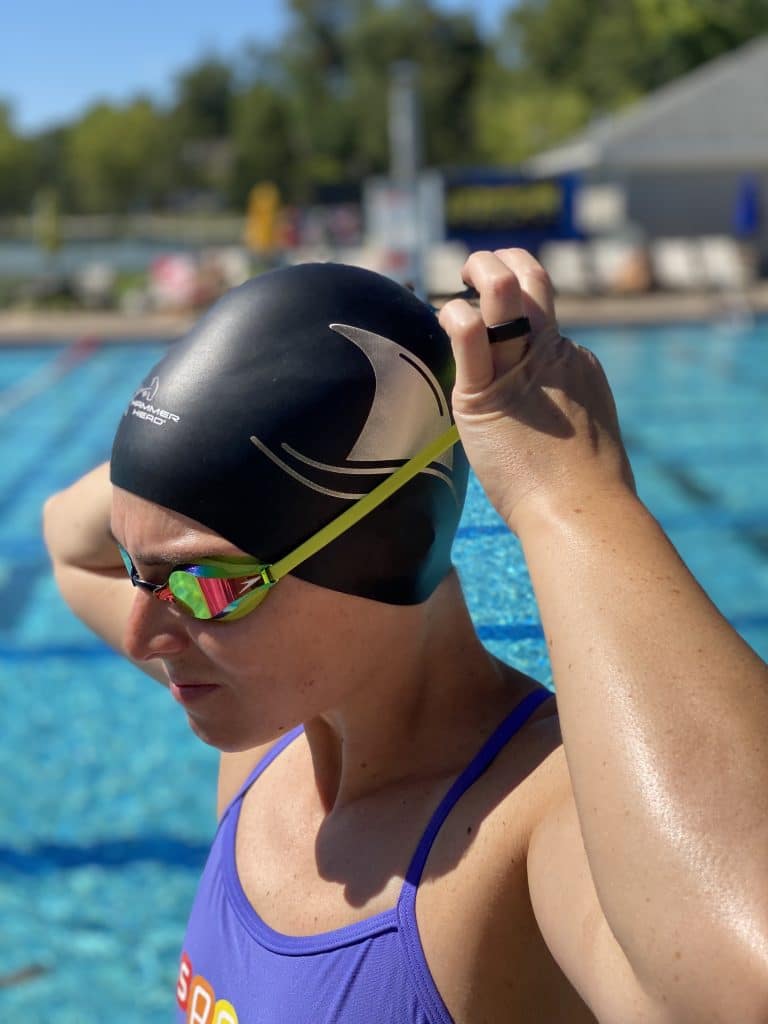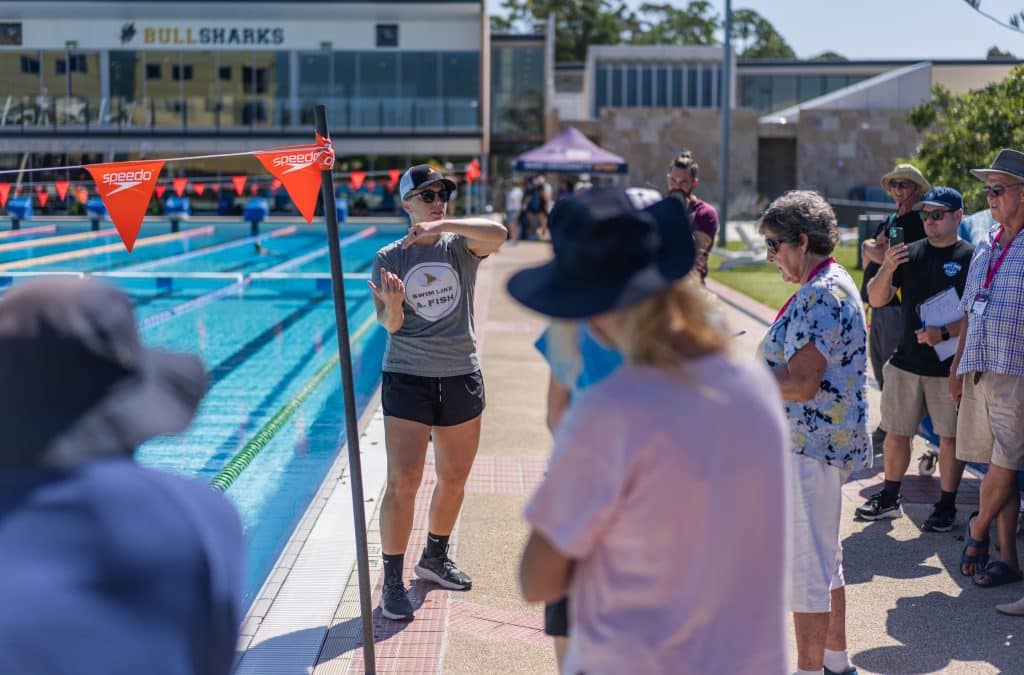The reality is that many races are won and lost on the walls. Yet, the intimidation of the Freestyle Flipturn causes many swimmers to focus on other parts of their race. Breaking down the Flipturn into 3 parts can help. When it comes down to it, a swimmer needs to carry their speed into the wall during their approach, get into the smallest ball possible, and have a plan that works for them to push off. If they can perform these 3 steps to the best of their ability, the likelihood they come off the wall ahead of the competition is super high! There’s no better feeling than popping off EVERY wall ahead of your competitors!
1. Carrying Your Speed To The Wall
One of the main reasons that swimmers shy away from truly great Freestyle Flipturns is because of fear, either conscious or unconscious. It makes sense: Hurling yourself at the wall while swimming at the fastest pace of your life is a brave thing to do. That’s also why we must practice until Fast Flipturns are a skill set that is second nature.

If I have a swimmer who is truly afraid of the wall even with practice, I recommend buying a Hammer Head Swim Cap x Swim Like A. Fish Logo for them. Hammer Head Swim Caps offer an extra layer of protection for swimmers because the inside of the cap has Honeycomb Technology built into the top. Even if they hit their head, they won’t feel the impact as much. Sometimes feeling safe is all your swimmer needs to practice Freestyle Flipturns at full speed!
Let’s Break The Approach Into Steps
Carrying your speed through the wall is necessary in order to come off the wall as fast as possible. After a swimmer overcomes their fear of hitting the wall, they then need to employ a few technique tricks in order to be successful.
- First, they must KNOW THEIR STROKE COUNT! Just like on a Backstroke Flipturn, knowing the stroke count is crucial. If a swimmer knows their stroke count, they won’t have to lift their head and slow their momentum to look at the wall.
- Know when to drop their chin. This should occur during the LAST TWO strokes into the wall and it initiates the entirety of the turn. A lot of times if a swimmer will focus on the T at the bottom of the pool – instead of the cross on the wall to indicate it’s time to drop their chin.
- No matter what, KEEP KICKING!!! A swimmer’s kick is their motorboat, and stopping it right before the wall guarantees that they will have to re-generate momentum on the way back out.
2. Fast Flipturns Require A SMALL Ball
I find that this step in the fast Freestyle Flipturn process is the MOST focused on by coaches. That’s because it’s easy to practice with swimmers! For an innovative drill that will challenge swimmers to get their ball as small as possible WHILE getting their feet over as fast as possible, try THIS Lane Line Drill.
Part of the small ball body position has already been initiated when a swimmer drops their chin on the final two strokes of the approach. From there, a swimmer should push their chest down. This is oftentimes a body position we have to practice on land first (hinging at the hips to push the chest down). After the chest comes down, a swimmer should pull their knees up. That will get them into the ball position right as the heels break the surface of the water.
Practice this in slow motion first. When we break it down into steps for our swimmers, it’s very doable. But the reality is that it all happens in less than a second.
3. Have A Plan for Your Push Off
If their approach and small ball position were successful, a swimmer is likely at a 1/4 of a squat position on the wall. Now it’s time to push off for step 3 of a FAST Freestyle Flipturn! There is debate amongst the swimming community about this step. Coaches question whether or not a swimmer should push off from their stomach, their side, or their back (with a caveat here that you cannot STAY on your back)! In my experience, the greatest chance of success a swimmer has comes from pushing off on their back and IMMEDIATELY roll to their side!
Remember that in swimming, you go where your fingertips point. That means that when a swimmer hits that squat position, they are ideally pointing directly at the other end of the pool. The strongest push-off occurs when a swimmer keeps that position. They should push with their legs, glutes, and abs. They stay on their back until their last toe leaves the wall, then they roll to their stomach. Of course, they should rotate to their side and their stomach as they begin dolphin kicking. I never have my swimmers initiate ANY dolphin kicks on their back, as that will incur a disqualification for them.
Leaving the wall on their back keeps swimmers under the water for a longer period of time which helps build their aerobic engine, give them more opportunity to perform dolphin kicks, and carry this higher speed generated for longer. I see the back type of push-off as the one that is the most consistent and powerful because the body isn’t rotated on the wall while it flipped.

Regardless of how a swimmer pushes off, the #1 rule is to have a plan. That means choosing the push-off that keeps their fingertips pointed to the other end of the pool. That’s whether what’s best for them is from their back, side, or stomach! Just be consistent.
No matter where you are in your Freestyle Flipturn journey, make sure to always be practicing these 3 steps. Spending enough time in practice will make you confident in a race. It could be the difference between your best time and not.
Until next time,
Abbie Fish and the Swim Like A. Fish Team

3 Responses
I feel like you are leaving out a very important step. What do you have your swimmers hands doing? As one balls up, I put emphasis on back hand flat and creating a pivot to help the roll increase speed. Then the last hand works to catch up to finish the pivot , then work the streamline.
We say there’s two ways to move the hands to streamline. Your way is one and straight arms is another!